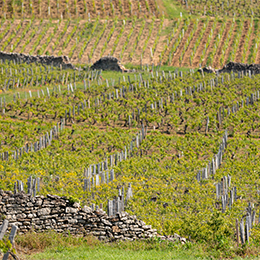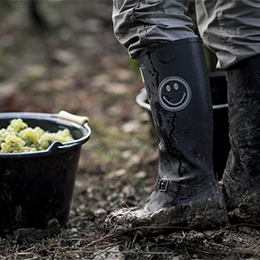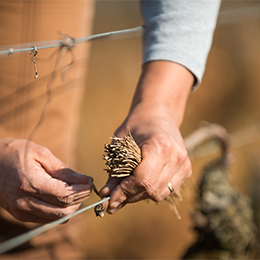Some Climats bear the mark of a real Burgundian temperament, constructed over the main episodes in the history of France and its winegrowing. The wines from these plots reflect the authentic regional character where the daily hard work merges with the passion of the winegrowers.
Winegrowing in the Bourgogne region dates back to Roman times, more than 20 centuries ago. It was shaped by the people – the kings, lords and monks who held the power through different periods in France’s history. In decoding the names of some of the Climats, you will discover this rich history, with all its humanity.

The Bourgogne region is an independent-spirited land stamped with spirituality.
Bearing witness to this living history, the clos formed the boundary walls of properties belonging to lords, the Dukes of Bourgogne and Kings of France. They were also used to enclose the land of certain prestigious religious institutions.
This was the case for Clos de Vougeot, a Climat made famous by the monks of the Abbey of Cîteaux.
In Gevrey-Chambertin, Duke Amalgaire gave the gift of a clos to the monks of the Abbey of Bèze. It is today known as, and was the first to leave its mark in history, with a written trace of it dating back to the year 640!
Different clos can be found right across the region, from Chablis Grand Cru, Les Clos, in the north to Pouilly-Fuissé, Au Clos, in the south. These walled plots are key symbols of the Bourgogne region.

Passionate about their work and the wines they produce, the people of Bourgogne (men as women!) have always been characterized by their hardened yet festive temperament.
The names of some Climats refer to the close relationship the locals have with their vines. For example, in the Bourgogne region, when the earth sticks to one’s feet, winegrowers are in the habit of saying that the earth is in love. This is no doubt the case in the Climat of Les Amoureuses in Chambolle-Musigny, which is made up of a shallow layer of clay over a very compact limestone layer. One just has to walk there after it has been raining to understand.
The name of this plot speaks to the imagination and arouses many different interpretations. The most likely is very down to earth!

Every day for more than 2,000 years, the men and women of the Bourgogne region have written the history of the vines and their wines with every gesture. The work in the vines has naturally given rise to some very significant names.
Such is the case for “La Corvée.” This term from feudal law denotes the days of compulsory free work that the serfs owed their seigneurs. This was the main way landowners were able to muster the necessary labor to carry out important seasonal tasks such as harvesting.
Some wines using this name include Ladoix Premier Cru, La Corvée and Nuits-Saint-Georges Premier Cru, Clos des Corvées.